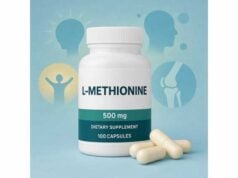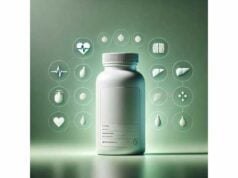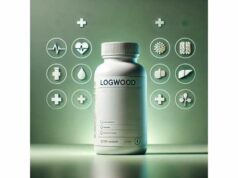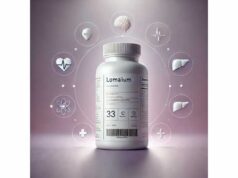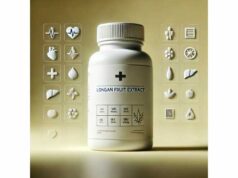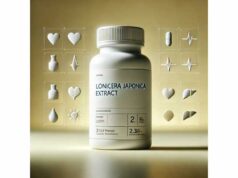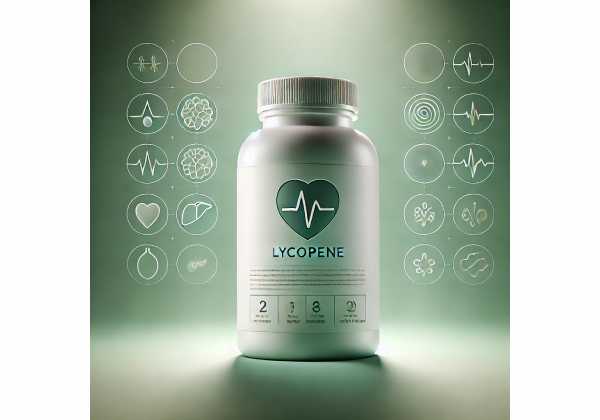
Lycopene is the red carotenoid that gives tomatoes, watermelon, and pink grapefruit their color. Beyond appearances, it acts as a potent singlet-oxygen quencher and lipid-phase antioxidant, accumulating in tissues such as the skin, liver, and prostate. Research links lycopene intake to support for photoprotection (helping skin tolerate sun exposure), cardiovascular risk factor management in select contexts, and prostate health. Because lycopene is fat-soluble and its absorption improves when food is cooked and eaten with oils, practical results depend as much on how you take it as on how much you take. This guide explains what lycopene is, how it seems to work, where it helps most, and how to choose and use supplements or food sources safely and effectively. You will also find dosage ranges, stacking tips, cautions, and a short evidence summary to set realistic expectations. As with all nutrition strategies, lycopene works best alongside basics—balanced meals, physical activity, sleep, and routine medical care—rather than in place of them.
Key Insights
- Oral lycopene may reduce UV-induced skin redness and support photoprotection when taken daily for 8–12 weeks with meals.
- Typical supplemental range: 10–30 mg/day; with food containing at least 10–15 g of fat for best absorption.
- Generally well tolerated; occasional stomach upset or harmless skin discoloration (lycopenemia) can occur at high intakes.
- Avoid supplements in pregnancy or while breastfeeding unless advised by a clinician; use caution with blood-thinning or blood-pressure drugs.
Table of Contents
- What is lycopene and how it works
- Proven benefits: skin, heart, prostate
- How to take it: dosage and timing
- Food sources vs supplements: which is better?
- Safety, interactions, and who should avoid it
- How to choose a quality lycopene supplement
What is lycopene and how it works
Lycopene is a non–provitamin A carotenoid (meaning the body does not convert it to vitamin A). Structurally, it is a linear polyene with 11 conjugated double bonds that absorb and dissipate energy from singlet oxygen and other reactive species. In humans, lycopene resides within cell membranes and lipoproteins, especially low-density lipoprotein (LDL) particles. It concentrates in lipid-rich tissues—skin, adrenal glands, prostate—where it can help stabilize membranes and protect lipids from peroxidation.
Absorption and metabolism. Raw tomatoes predominantly contain all-trans lycopene packed in plant chromoplasts. Heat and mechanical processing (cooking, pureeing, drying) disrupt those structures and generate more cis isomers, which tend to be more soluble in mixed micelles. In practical terms, tomato paste, sauces, and juices deliver lycopene that is more bioavailable than the same amount from raw slices. Being fat-soluble, lycopene requires dietary lipids and bile acids for micelle formation. Taking lycopene with a meal that includes enough fat notably improves absorption; meals with very little fat limit uptake. After intestinal absorption, lycopene enters chylomicrons, then circulates in VLDL/LDL, reaching peak plasma concentrations over days to weeks of repeated intake. Accumulation is gradual; tissue levels reflect habitual intake rather than single doses.
Biological actions. Three complementary pathways explain most clinical observations:
- Photoprotection in skin. By quenching singlet oxygen generated by UV exposure and moderating redox-sensitive transcription factors in skin (for example, NF-κB and AP-1), lycopene-rich diets can reduce UV-induced erythema (the visible redness) and attenuate upregulation of pro-inflammatory cytokines. Over weeks, higher cutaneous carotenoid content correlates with improved tolerance to standardized UV challenges.
- Cardiometabolic support. Lycopene may dampen lipid peroxidation and improve endothelial nitric-oxide bioavailability. Some trials observe modest effects on LDL oxidation, endothelial function, or selected lipid parameters; others find neutral results. Heterogeneity is driven by dose, source (food vs capsule), baseline diet, and whether participants already have elevated risk factors.
- Prostate health signals. Observational cohorts often report inverse associations between lycopene status and prostate cancer risk, especially for higher long-term intakes. Interventional data for disease biomarkers are mixed, but tissue uptake into the prostate and antioxidant signaling plausibly contribute to the epidemiology.
What lycopene is not. It is not a sunscreen, weight-loss aid, or a treatment for cancer or cardiovascular disease. Benefits are adjunctive and steady, accumulating with consistent intake rather than producing rapid, dramatic changes. Framing expectations this way helps you judge its value alongside dietary patterns (Mediterranean-style eating, whole grains, legumes), movement, and routine screening.
Proven benefits: skin, heart, prostate
Skin photoprotection (most consistent). Multiple controlled human trials show that daily lycopene intake—often delivered as tomato nutrient complexes—can reduce UV-induced erythema and blunt the expression of inflammatory mediators in skin biopsies after experimental UV exposure. Importantly, these effects require time: cutaneous carotenoid levels rise slowly, so studies typically supplement for 8–12 weeks before retesting. The practical outcome is not sunburn immunity but a higher threshold before redness appears and less post-exposure inflammation. People with fair skin or those who spend regular time outdoors may notice subtler reddening and improved recovery. Still, topical sunscreens, shade, clothing, and behavior remain non-negotiable; oral photoprotection is a layer, not a replacement.
Cardiovascular risk markers (mixed, context-dependent). Evidence from intervention trials and systematic reviews suggests small or null average effects on blood pressure and standard lipids across diverse populations. Where benefits appear, they are more likely in individuals with elevated baseline oxidative stress or impaired endothelial function, and when doses reach the 10–30 mg/day range taken with meals. Tomato-based interventions that include other phytonutrients (e.g., phytoene, phytofluene, vitamin E) sometimes produce more robust signals than isolated lycopene, possibly through synergistic actions and better bioavailability. Expect conservative changes—slightly improved endothelial responses, modest shifts in LDL or triglycerides—rather than dramatic lipid remodeling.
Prostate health (promising associations, cautious interpretation). Observational meta-analyses frequently report that higher habitual lycopene intake or circulating levels are associated with lower prostate cancer risk, particularly for advanced disease. Proposed mechanisms include decreased oxidative DNA damage, modulation of insulin-like growth factor signaling, and effects on androgen-responsive pathways. However, randomized trials testing lycopene on disease progression markers or PSA in diagnosed patients show variable results. For prevention-minded readers, diet-first strategies—regular tomato products with olive oil, fruits, vegetables, legumes—remain the most credible approach, with lycopene supplements as an optional adjunct for those who struggle to meet dietary targets.
Other areas explored. Early work examines bone turnover markers, male fertility parameters (semen quality), and glycemic control. Findings are preliminary or inconsistent. If you pursue lycopene for these reasons, align expectations with the evidence: potential supportive effects, not established clinical outcomes.
Who notices benefits most?
- People with fair or photosensitive skin who already practice sun-safe habits and want incremental photoprotection.
- Adults with suboptimal diets who add tomato-based dishes with oil multiple times per week.
- Individuals aiming for cardiometabolic maintenance, not treatment—especially when lycopene is part of a broader Mediterranean-style pattern.
What benefits to track. For skin: photo diary during similar sun exposure, time-to-redness, and perceived recovery. For heart health: resting blood pressure logs, lipid panels at 8–12 weeks, and lifestyle consistency. For prostate: focus on long-term dietary patterns and routine screening per medical guidance.
How to take it: dosage and timing
Supplement dose. Practical daily intake for most adults is 10–30 mg/day of lycopene. Many clinical trials cluster near 15 mg/day from tomato extract complexes or 20–30 mg/day from softgels. If you are new to lycopene or have a sensitive stomach, start at 10 mg/day for two weeks, then increase toward 20–30 mg/day if desired.
With food and fat. Always take lycopene with a meal to aid micelle formation. Meals containing ≥10 g of fat (about 2 teaspoons of olive oil plus food fats) improve absorption from cooked tomato products; ~15 g may be needed for uncooked sources like salads with raw tomatoes. The specific fat type matters less than the presence of enough total fat. Splitting the dose (e.g., 10 mg at lunch, 10 mg at dinner) can maintain steadier plasma levels and reduce reflux in sensitive users.
Food-based strategy. If you prefer food over pills, aim for several servings per week of cooked tomato products: 2–4 tablespoons of tomato paste stirred into sauces or soups, 1 cup of marinara or tomato soup, or ½–1 cup of stewed tomatoes. Pair with oil (olive oil works well). Watermelon, pink grapefruit, and papaya contribute, but gram-for-gram they supply less lycopene than concentrated tomato products.
Duration and timing. Expect 8–12 weeks of consistent intake before judging skin outcomes, as dermal carotenoid content accumulates slowly. Cardiometabolic markers are usually reassessed at 8–12 weeks as well. Lycopene has a relatively long residence time; daily consistency matters more than precise timing.
Combinations that make sense.
- Tomato nutrient complexes that include phytoene, phytofluene, and vitamin E may mimic whole-food synergy and support photoprotection.
- Mediterranean-style meals (olive oil, nuts, legumes, greens) support endothelial health and complement lycopene.
- Other carotenoids (lutein/zeaxanthin) can be taken concurrently; there is no strong evidence they compete at typical intakes when consumed with meals.
What to avoid.
- Taking lycopene on an empty stomach—absorption will be poor.
- Assuming more is always better. Intakes much above 30–45 mg/day rarely add benefits and can cause orange-red skin discoloration over time (benign, reversible).
Example routines.
- Supplement-first: 15 mg lycopene softgel with lunch daily for 12 weeks; re-evaluate skin redness and lipid panel.
- Food-first: 2–3 times per week, cook with tomato paste and olive oil; once weekly, have tomato soup; add a slice of watermelon as a snack; consider a 10 mg supplement only on days when intake is low.
Missed doses and travel. Missing a day is not critical. Resume with the next meal. For travelers, sachets of tomato paste and small olive oil packs can keep a food-first approach on track.
Food sources vs supplements: which is better?
Bioavailability favors processed tomato foods. Heat and homogenization transform all-trans lycopene into more absorbable cis isomers and break down cell matrices. That is why tomato paste, passata, and slow-simmered sauces typically deliver more absorbable lycopene per gram than raw tomatoes. Adding oil during cooking further enhances uptake. For many readers, food is the most cost-effective, sustainable way to raise lycopene status.
Supplements improve precision and convenience. Standardized tomato extracts and synthetic lycopene in softgels provide a known dose in one or two capsules. This is useful when you want a consistent 15–30 mg/day intake, have dietary restrictions, or need an on-the-go option. Some products combine lycopene with phytoene/phytofluene and vitamin E, approximating the tomato matrix and sometimes performing better in photoprotection trials than isolated lycopene alone.
Which to choose depends on your goal:
- Skin photoprotection: Either approach works, but trials often use tomato nutrient complexes or standardized extracts for 12 weeks. If you enjoy cooking, a steady rotation of tomato-rich meals with olive oil can be equally effective over time.
- Cardiometabolic maintenance: Emphasize whole dietary patterns—vegetables, legumes, whole grains, fish, nuts—with tomato products as frequent players. Supplements can fill gaps on low-tomato days.
- Prostate-focused prevention mindset: Sustained, long-term dietary intake offers broader benefits (fiber, potassium, polyphenols) beyond lycopene. Supplements are optional add-ons when diet falls short.
Cost and practicality. Per effective dose, a jar of tomato paste used over a week is often cheaper than capsules. But if you frequently eat out or prefer minimal cooking, softgels may be the more realistic route. Adherence beats idealism.
Taste and tolerance. Some people experience reflux from acidic tomato sauces; gentler options include blended tomato soups, low-acid varieties, or capsules with meals. If you are salt-sensitive, watch sodium in canned sauces and choose low-sodium products.
Sustainability notes. Choosing tomato products from producers that minimize waste (e.g., using the whole fruit, recyclable packaging) aligns health goals with environmental stewardship. Home cooking with seasonal tomatoes—then freezing sauces—offers high quality and less packaging per serving.
Bottom line. There is no single “best” choice. Pick the route you will actually follow for months. A hybrid plan—food most days, a 10–15 mg capsule on low-tomato days—covers both bases with minimal effort.
Safety, interactions, and who should avoid it
General safety. Lycopene from foods and supplements is generally well tolerated. The most common issue at high, chronic intakes is lycopenemia—a harmless orange-red tint to the skin, similar to carotenemia from carrots. It fades when intake drops. Occasional GI symptoms (nausea, reflux, loose stools) can occur if capsules are taken without food.
Allergies and sensitivities. Tomato allergy is uncommon but real; anyone with confirmed tomato allergy should avoid tomato-derived supplements. People sensitive to nightshades may tolerate refined extracts better than sauces, but this is individual.
Medication considerations.
- Antihypertensives and nitrates: If you notice lightheadedness when standing after starting high-dose lycopene or tomato complexes, check blood pressures and discuss with your clinician. While effects are usually small, additive changes are possible.
- Anticoagulants/antiplatelets: Tomato extracts and carotenoids are not strong anticoagulants, but any supplement added to stable regimens warrants a quick review with your prescriber, especially around procedures.
- Chemotherapy and cancer care: Do not self-supplement at high doses around active treatment unless your oncology team approves; timing relative to therapy can matter.
Special populations.
- Pregnancy and breastfeeding: Food sources are encouraged as part of a balanced diet, but avoid high-dose supplements unless your clinician recommends them; safety data are limited.
- Infants and children: Rely on foods, not supplements, unless advised by a pediatric clinician.
- Kidney or liver disease: Stick to food sources or low doses and inform your care team; routine labs guide safe use.
- Low-blood-pressure tendency: Start at the lower end (10 mg/day), monitor how you feel, and increase only if well tolerated.
Sun-safety reminders. Even with months of intake, lycopene does not replace broad-spectrum sunscreen, protective clothing, hats, sunglasses, or intelligent exposure timing. Think “seatbelt and airbags”: oral photoprotection is helpful but not sufficient on its own.
When to stop and seek care. New-onset hives, throat swelling, wheezing, or severe abdominal pain warrant discontinuation and prompt evaluation. If you are on multiple heart or diabetes medications and notice unusual dizziness or glucose variability after starting a supplement, contact your clinician to review the plan.
Reporting adverse events. Keep product labels and lot numbers. If a serious effect occurs, your local regulator or poison information center may request these details to investigate.
How to choose a quality lycopene supplement
1) Dose and standardization. Look for products that clearly list lycopene (mg per serving) and the source (tomato extract vs synthetic). For tomato extracts, labels often specify a percentage (e.g., 6% lycopene) or list co-nutrients such as phytoene/phytofluene and vitamin E. Avoid proprietary blends that hide the lycopene milligrams.
2) Formulation and bioavailability. Oil-based softgels increase absorption. Complexes that include phytoene and phytofluene may mirror the tomato matrix and have supportive evidence for skin endpoints. Micellized or beadlet forms can be useful if you have fat-malabsorption concerns, though clinical head-to-head data are limited. Regardless of form, take with food that contains fat.
3) Third-party testing. Choose brands that publish or provide Certificates of Analysis (CoA) confirming identity, potency, heavy metals, and microbial standards. Programs such as USP, NSF, or Informed Choice add confidence, especially for athletes.
4) Additive profile. Prefer minimal excipients; some softgels use soybean oil or sunflower oil—fine for most people. If you avoid certain oils, check the excipient list. Steer clear of unnecessary colors or flavors.
5) Company transparency. Reputable firms disclose manufacturing sites (e.g., cGMP-registered facilities), batch testing, and contact details for quality inquiries. Marketing should reflect evidence (e.g., photoprotection support over 8–12 weeks) rather than disease-treatment claims.
6) Value math. Calculate cost per 10–15 mg of lycopene. A bottle that appears inexpensive but supplies only 5 mg per capsule may be less economical if you need three capsules daily to hit your target.
7) Practical fit. If you already eat tomatoes several times per week, a 10–15 mg capsule on low-tomato days may be enough. If you rarely cook or travel often, a 20–30 mg/day softgel can maintain steady intake.
8) Storage and shelf life. Keep capsules in a cool, dark place. Carotenoids degrade with heat, light, and oxygen; close bottles tightly and use within the labeled period. For pantry sauces, choose BPA-free cans or glass jars and refrigerate after opening.
9) Personalization and tracking. Define your goal—skin resilience, general cardiometabolic maintenance, or diet back-up. Track a simple scorecard: weekly servings of tomato foods, days you took capsules with a fat-containing meal, skin-exposure notes, and any symptoms. Reassess at 12 weeks to decide whether to continue.
Bottom line. Match the product to your goal, insist on clear labeling and third-party testing, and build a routine that pairs lycopene with fat-containing meals. That combination—quality plus consistency—drives results.
References
- Molecular evidence that oral supplementation with lycopene or lutein protects human skin against ultraviolet radiation: results from a double-blinded, placebo-controlled, crossover study (2017)
- Tomato Phytonutrients Balance UV Response: Results from a Double-Blind, Randomized, Placebo-Controlled Study (2019) (RCT)
- Effect of Dietary and Supplemental Lycopene on Cardiovascular Risk Factors: A Systematic Review and Meta-Analysis (2020) (Systematic Review)
- Lycopene and tomato and risk of cardiovascular diseases: A systematic review and meta-analysis of epidemiological evidence (2019) (Systematic Review)
- Lycopene: A Critical Review of Digestion, Absorption, Metabolism, and Excretion (2021)
Disclaimer
This guide is educational and is not a substitute for personalized medical advice, diagnosis, or treatment. Always consult a qualified healthcare professional before starting any new supplement, especially if you are pregnant or breastfeeding, have chronic conditions, or take prescription medications. If you experience unexpected symptoms after using lycopene, stop and seek medical care.
If this article helped you, please consider sharing it on Facebook, X (formerly Twitter), or your preferred platform, and follow us for future updates. Your support helps us continue producing clear, evidence-based articles. Thank you.

